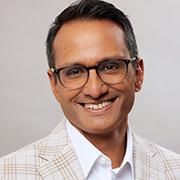
Though I only just joined the New York Fed in February, I’ve been closely following its equitable growth research for nearly five years. Recently, I spoke with researchers from a broad range of areas across the Federal Reserve System, including micro-, macro-, and financial economics, about why “equitable” and “growth” are important to our understanding of the economy. Given today’s release of our Equitable Growth Indicators, I want to share more broadly, in my view, why this work matters to us.
Our research teams across the Federal Reserve System seek to understand how our economy works—in all its aspects. It’s the key to executing monetary policy and economic research completely and effectively. It’s important for us to understand how the economy creates opportunities for everyone, and then matches those opportunities to individuals. This lies at the heart of our maximum employment mandate and has a clear and direct connection to the growth prospects for the U.S. economy—which is so important to grasp when making monetary policy that delivers on our inflation mandate.
To me, the current and future matching process of opportunities to individuals is a two-way street and matters for the overall creation of economic growth. The way in which we create opportunities can also shape the future matching process. To take one example, at the middle of the last century, almost all physicians, research scientists, and lawyers were men, and that too, from a single racial group. Unless one thinks those not represented in these ranks were uniformly uninterested in those careers, it’s almost certain that many people missed an opportunity to enhance their lives by pursuing one of those professions—not to mention the obvious frustration that comes with the throttling of their potential. It was surely a world of missed opportunities to achieve a bigger and better economy for all.
The lack of broader opportunities for career and work choices has a second impact that compounds the effects: When it will always be a little, or a lot, harder for the members of a group to get to the same place as those who currently dominate any given profession, they will surely come to understand this. And when people understand that the hill for them will always be steeper, they will also reasonably see it as a tax. In general, this tax will discourage—as taxes do. Here that means skill acquisition and commitment to staying in a career will both be eroded. In aggregate, this means our economy misses out on so many more skills, so many more ideas, and ultimately so much more growth.
To sum up, equity can lead to growth, and the resulting growth can almost certainly help to foster the more equitable serving up of opportunities. If this sounds too abstract outside the research sphere, then I have some good news. When I think of equitable growth, I realize we have a two-word reminder today: Caitlin Clark. To me, my fellow Iowan makes clear what equitable growth—in this case in basketball—can do. Just look at the impact Clark has had on the fan base and talent pool for women’s basketball: Both have become much richer and bigger as well as better recognized. And this, writ large, is what is available if we can get equitable growth right.
Turning to our work at the New York Fed, equitable growth is vital to our mission “to make the U.S. economy stronger and the financial system stable for all segments of society.” It is important to collect thought leadership that will help us inform the public, policymakers, and researchers about differences in economic experiences, behaviors, expectations, and outcomes.
We conduct a lot of research and policy work on equitable growth ourselves. I want to draw your attention to two important pieces of research:
- At a quarterly frequency, we produce the Equitable Growth Indicators (EGIs), which measure disparities in macroeconomic outcomes experienced by different demographic, economic, and geographic groups on both a national and regional level. The EGIs present disparities in inflation, earnings (real and nominal), employment, spending (real and nominal), and wealth. The latest update for the EGIs was released today, Tuesday, April 9.
- We also routinely produce the Economic Inequality Research Series as part of Liberty Street Economics—our research-focused blog—which highlights differences in economic outcomes, behaviors, expectations, and policy impacts by race, ethnicity, gender, age, veterans status, geography, income, education, and other factors. While we first introduced the series in October 2019, we are continually exploring new topics and themes relevant to our changing economy.
The Federal Reserve System produces a diverse set of work that relates to the interaction of equitable growth with economic mobility and opportunity and intergenerational mobility; with wealth formation; with higher education and the labor market; with fiscal policy and monetary policy; and with banking and credit access.
I encourage you to take a look at the work we do on this topic—including our Equitable Growth Indicators released today—and continue to learn how equitable growth supports a stronger economy for all.

Kartik B. Athreya is director of research and head of the Research and Statistics Group of the Federal Reserve Bank of New York.
The views expressed in this article are those of the contributing authors and do not necessarily reflect the position of the New York Fed or the Federal Reserve System.










